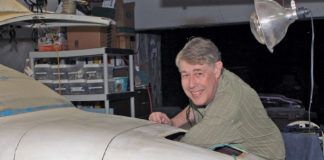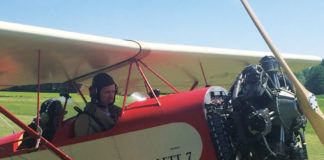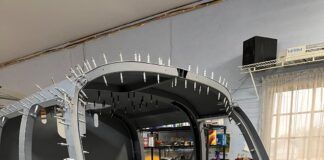Once upon a time, airplanes were simple. Made mostly of wood and fabric, with a few metal parts to connect the cables and struts, they were conceived and constructed by men familiar with farm implements and simple tools. The wingtips on the very first airplane were, in fact, hoops from a buggy canopy—resourcefulness and ingenuity being one of the strong aspects of the Wright brothers’ character. Homebuilt aircraft of the ’50s and ’60s were similarly simple, with the use of available materials and engines (sometimes from an old car) that could be found by the average person with limited resources.
Pilots being what they are, such simple airplanes immediately became the subject of upgrades. Everyone always wants to go a little faster, fly a little higher, travel a little farther. It would be nice to be able to talk to someone else on a radio, and maybe even navigate with some other sort of electronics. And then someone takes the step of flying their homemade airplane in the clouds, leading to the never-ending arms race in complex electronics that today allow us to fly in just about any conditions, with “George” handling the controls while we plot our next business deal or flip through Internet pages to find our next project.
The truth, of course, is that people are building airplanes of all levels all of the time. Some are going for light and simple, while others are working on that high-Mach suborbital business rocket they hope will bring them nonstop across the Atlantic in just 25 minutes. And that’s OK, for variety is the spice of life, and people should build the airplane they want—not the one that others think they should build.
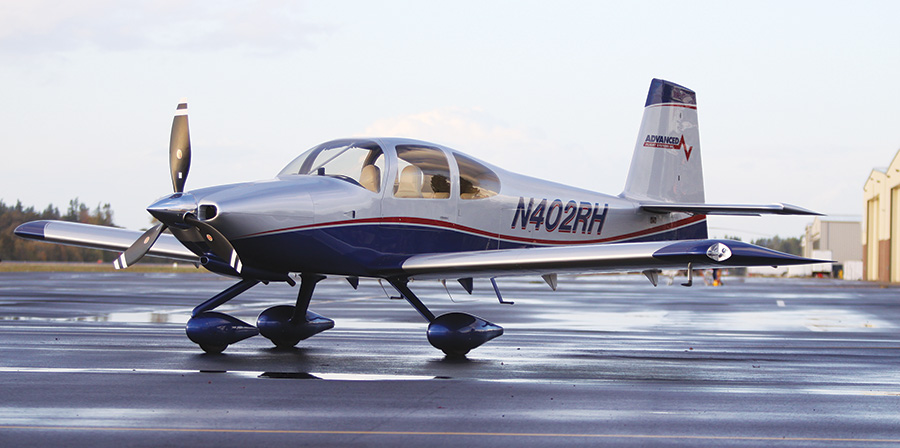
The RV-10 is a four-seat traveling machine that rivals the most complex certified singles on the market—for far less money.
Building on a Budget
A builder needs to know their own limitations when choosing a project. Most builders can learn just about anything, but financial considerations (among many other factors) always drive the projects that we choose. Many builders start with a set of plans and buy materials along the way to produce frames for a fabric-covered fun machine. The tail comes along one year, the fuselage frame the next, and wings are formed in yet another winter or summer. Builders find good deals on an engine and store it away for the time when they have an airframe on which to mount it. Many collect instruments at various fly markets and from online ads, readying them for the time when they have an instrument panel to fill out. Airplanes like these are often works of art because the builder has more time than money—and time is an important element of craftsmanship.
Building in tube, fabric, and wood is a wonderful way to connect to your inner craftsman. Running one’s hands over a piece of spruce or a sheet of plywood that will become a major element of your flying machine is a sensual experience that can rival the joy of flight. Such projects can be completed quickly, but in doing so, the builder often misses the joy of savoring the process. Doping and sanding, doping and sanding—finishing a fabric airplane takes time (and generates a certain amount of mess), but simple planes bring around visitors who might otherwise never have been met. Open hangar doors invite the curious—and sometimes the visitors stay to become helpers—even partners. Building this way is indeed a way to become so deeply involved in aviation that one can feel the history seeping into their very core.
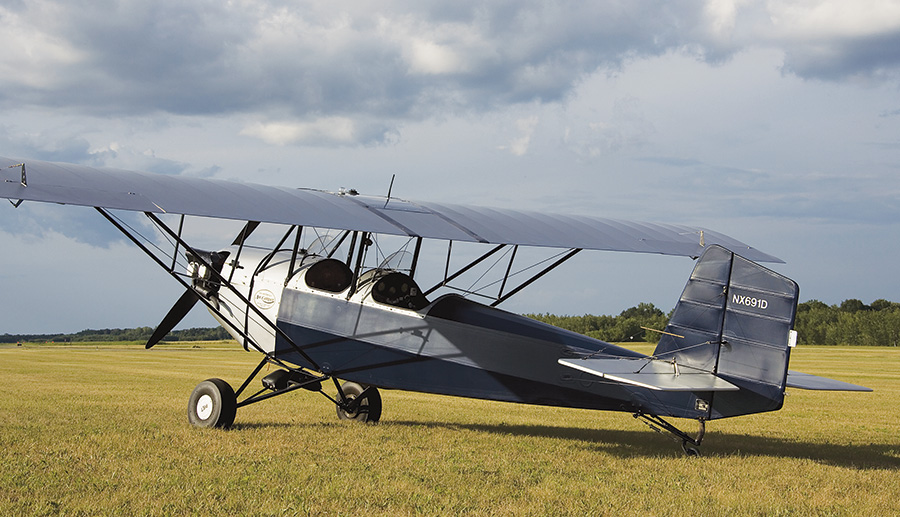
Open cockpit designs take us back to the early days of aviation and allow us to simply enjoy the sky.
Complex Projects
Of course, for every simple airplane under construction in hangars across the globe, there are many more complex airplanes taking shape. Made of metal and fiberglass, machines of all speed ranges and purposes grow from plans and kits to fulfill their creators’ desire for speed and complex capabilities. Where the simple plane builder might have only a few wires to install to control the magnetos, the complex aircraft builder contends with multiple power buses, dozens of serial computer channels, and antennas for the variety of transmitters and receivers needed for flight in the clouds.
Complex homebuilts include aircraft with turbine engines and pressurization. The list includes multi-engine machines and those with hybrid powerplants. Wings can fold and unfold, with high lift devices sprouting from leading and trailing edges—and sometimes the fuselage itself. Wheels retract, cowl and radiator flaps open and close, and if you don’t like the mechanical nature of actuating such devices, electronic servos are available to do the job for you. Many builders are computer-savvy and have designed control systems to manage nearly everything in the airplane—including in-flight coffee service. Complex avionics systems rival what is available in all but the latest transport-category aircraft that are winging paying passengers across the oceans of the globe.
Construction methods for these complex machines range from metal forming and riveting, to autoclaving composite materials to achieve shapes conceived in computers and transferred electronically to machines capable of carving smooth contours in foam and plastic. Builders learn a variety of construction techniques while creating these complex machines—none of them better or worse than their counterparts slaving away with dope and fabric—just different.
And that is what we have to recognize when we see the many different types of airplanes listed in these pages. They are all different—but none is inherently better or worse than another. Just different. Go to the average active EAA chapter and you’ll see and talk with people building all across the board. I have walked through many an airport and seen a Cub-like aircraft taking shape next door to a Lancair IV-P, a pressurized go-fast machine that can whisk its passengers across the country, while the Cub pilot is still making his first fuel stop 150 miles from home.
Pre-Punched Kits
Many, many builders are sharing the common experience of building modern metal airplanes from pre-punched kits. They share information on common avionics and engines, fuel systems that have become safer by standardization, and systems layouts that have been well-proven by those who have gone before. These airplanes are quickly becoming the bread and butter of general aviation; many airports now have more operations in a week from Experimental aircraft than they do from the aging certified general aviation fleet in a month. Fast or slow, Experimental aircraft are the fastest growing segment of aviation—and equipment manufacturers are beginning to take notice.
Build What You Want
Fast or slow, high or low, take your pick and build what works best for you. Wander the airport, peek into hangars, and revel in the choices we have, as evidenced by the choices of others. Take joy in your neighbor’s Legal Eagle while you prepare fiberglass layups for your Cozy. Stop in and have a look at the RV-3 being built down the way, and see the smile of the guy that just figured out a way to make his bulkheads fit. Listen to the woman running up the brand new IO-540 on the RV-10 she has built to carry her growing family around the country to visit the relatives. And don’t forget that fellow out in the distant hangar working on that helicopter—for not all homebuilts have fixed wings.
The truth is, Experimental aviation is more than a tale of two airplanes—it is a tale of as many planes as have been built. No two are alike, no two built for exactly the same purpose. None are equipped identically, and none have the exact same capability. But all of their builders have shared a common experience: the joy of bringing raw materials together in a way that creates flight. And flight, in all its forms, binds us together as homebuilders. Pick the airplane or project that is right for you—the aircraft that you want to build—not the one that others want you to build.

